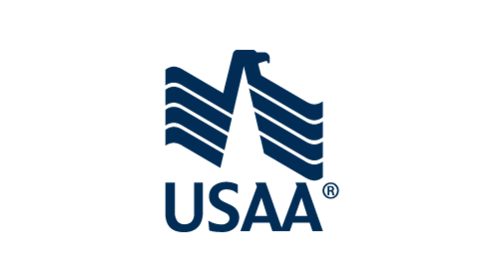The Best Home Insurance in Utah for 2023
Many or all of the products featured here are from our partners who compensate us. This influences which products we write about and where and how the product appears on a page. However, this does not influence our evaluations. Our opinions are our own. Here is a list of our partners and here's how we make money.
The average cost of homeowners insurance in Utah is $950 per year, or about $79 per month, according to a NerdWallet analysis. That’s considerably less than the national average of $1,820 per year.
We’ve analyzed rates and companies across the state to find the best homeowners insurance in Utah. Our sample rates are for a homeowner with good credit and $300,000 of dwelling coverage, $300,000 of liability coverage and a $1,000 deductible. Your rates will be different.
Note: Some insurance companies included in this article may have made changes in their underwriting practices and no longer issue new policies in your state.
The best homeowners insurance in Utah
If you’re looking to buy homeowners insurance from a well-rated national brand, consider one of these insurers from NerdWallet’s list of the Best Homeowners Insurance Companies.
Company | NerdWallet star rating | Average annual rate |
|---|---|---|
$740 | ||
$1,065 | ||
$745 | ||
$855 | ||
USAA* | $1,395 | |
*USAA homeowners policies are available only to active military, veterans and their families. | ||
More about the best home insurance companies in Utah
See more details about each company to help you decide which one is best for you.
Coverage options
Discounts
NAIC complaints
State Farm
Coverage options
Discounts
NAIC complaints
State Farm is a great choice for homeowners who like to work directly with a company representative, as the company sells policies through a wide network of agents. And its attention to customer service has paid off; the company has fewer customer complaints to state regulators than expected for a company of its size.
State Farm offers a free Ting device as a perk for home insurance policyholders. Ting is a smart plug that monitors your home’s electrical network to help prevent fires.
Learn more in our State Farm homeowners insurance review.
Farmers
Coverage options
Discounts
NAIC complaints
Farmers
Coverage options
Discounts
NAIC complaints
Homeowners policies from Farmers may include two valuable types of insurance: extended dwelling and replacement cost coverage. Extended dwelling coverage gives you extra insurance for the structure of your house, while replacement cost coverage offers higher reimbursement for stolen or destroyed belongings.
Some Farmers policies also come with perks that can save you money. For example, with claim forgiveness, Farmers won’t raise your rate for a claim as long as you haven’t filed one within the past five years.
Learn more in our Farmers homeowners insurance review.

American Family
Coverage options
Discounts
NAIC complaints

American Family
Coverage options
Discounts
NAIC complaints
Founded in Madison, Wisconsin, American Family receives fewer consumer complaints than expected for a company of its size. You may be able to customize your policy with optional add-ons such as identity theft, equipment breakdown or service line coverage, which pays for repairs to water, power or other underground lines that run to your house.
Homeowners may be able to save on their premiums by installing smart-home devices, bundling multiple policies or setting up automatic payments.
Get more information in our American Family homeowners insurance review.

Nationwide
Coverage options
Discounts
NAIC complaints

Nationwide
Coverage options
Discounts
NAIC complaints
Nationwide’s standard homeowners policies include ordinance or law coverage, which pays to bring your home up to the latest building codes after a covered claim. They also include coverage for unauthorized credit or debit transactions. For an extra cost, you may be able to add coverage for things like water backup, identity theft and stronger materials to replace your roof.
The Nationwide website offers plenty of ways to manage your policy, including filing and tracking claims, paying bills and getting quotes.
Learn more in our Nationwide homeowners insurance review.

Coverage options
Discounts
NAIC complaints

USAA
Coverage options
Discounts
NAIC complaints
USAA sells homeowners insurance to veterans, active military members and their families. If that description fits you, you may want to consider a USAA policy. That’s because the company’s homeowners insurance has certain features that other insurers may charge extra for.
For example, USAA automatically covers your personal belongings on a “replacement cost” basis. Many companies pay out only what your items are worth at the time of the claim, which means you may not get much for older items. USAA pays enough for you to buy brand-new replacements for your stuff.
Get more information in our USAA homeowners insurance review.
How much does homeowners insurance cost in Utah?
The average annual cost of home insurance in Utah is $950. That’s 48% less than the national average of $1,820.
In most U.S. states, including Utah, many insurers use your credit-based insurance score to help set rates. Your insurance score is similar but not identical to your traditional credit score.
In Utah, those with poor credit pay an average of $1,940 per year for homeowners insurance, according to NerdWallet’s rate analysis. That’s more than double the rate of those with good credit.
Average cost of homeowners insurance in Utah by city
How much you pay for homeowners insurance in Utah depends on where you live. For instance, the average cost of home insurance in Salt Lake City is $945 per year, while homeowners in St. George pay $895 per year, on average.
City | Average annual rate | Average monthly rate |
|---|---|---|
American Fork | $935 | $78 |
Bountiful | $915 | $76 |
Cedar City | $895 | $75 |
Clearfield | $900 | $75 |
Draper | $975 | $81 |
Eagle Mountain | $980 | $82 |
Herriman | $915 | $76 |
Kaysville | $930 | $78 |
Layton | $930 | $78 |
Lehi | $920 | $77 |
Logan | $925 | $77 |
Ogden | $950 | $79 |
Orem | $940 | $78 |
Pleasant Grove | $950 | $79 |
Provo | $950 | $79 |
Riverton | $940 | $78 |
Roy | $925 | $77 |
Salt Lake City | $945 | $79 |
Sandy | $945 | $79 |
South Jordan | $915 | $76 |
Spanish Fork | $945 | $79 |
St. George | $895 | $75 |
Tooele | $955 | $80 |
West Jordan | $910 | $76 |
West Valley City | $940 | $78 |
The cheapest home insurance in Utah
Here are the insurers we found with average annual rates below the Utah average of $950.
Company | NerdWallet star rating | Average annual rate |
|---|---|---|
Farm Bureau Financial Services | 3.5 NerdWallet rating | $650 |
$740 | ||
$745 | ||
$855 | ||
Mutual of Enumclaw | 3.5 NerdWallet rating | $895 |
What to know about Utah homeowners insurance
Utah is geographically diverse, with landscapes ranging from the salt flats of the north to the desert of Moab and everything in between. With all that diversity comes a wide range of risks homeowners should consider when shopping for the best home insurance in Utah.
Earthquakes and other land movement
Utah sees 700 earthquakes a year, which can spell problems for homeowners. Additionally, mountainous terrain and steep slopes make parts of Utah vulnerable to landslides.
Unfortunately, ground movement, such as earthquakes and landslides, is not covered under standard homeowners insurance policies. To get this coverage, you’ll typically need to purchase separate earthquake insurance or get an endorsement on your existing homeowners insurance policy.
When reviewing your earthquake insurance, pay attention to the deductibles. Deductibles are often quite high for earthquake coverage, as the risk is localized to fewer parts of the country. These deductibles are typically represented by a percent of the coverage on your policy as opposed to the amount of the loss. For example, if you have a 5% deductible on $200,000 of coverage, you would need to pay a $10,000 deductible for earthquake damage before your insurance kicks in.
When reviewing earthquake insurance policies, look to see if they cover mudslides. A mudslide triggered by an earthquake may be covered by your earthquake insurance, but it’s typically not covered by standard home insurance.
Wildfires
Utah is highly prone to wildfires. In 2018, 1,327 wildfires caused over $13 million in damages across the state. Homeowners insurance policies typically cover damage caused by fire, but it's important to ensure that your policy covers wildfires.
When reviewing your policy, pay particular attention to your dwelling coverage limit. This is the amount the insurance company will pay to rebuild your house. A significant fire can destroy your whole home, so talk to your insurance agent to make sure your coverage can help you rebuild if necessary.
Winter weather
Utah’s mountains lend themselves to some of the best skiing in the U.S. However, if you’re a Utah resident in the snowier portions of the state, you’re likely also familiar with the downside to winter weather, including damage to your home from snow and ice.
A standard homeowners policy typically covers damage from winter storms, including fallen trees or collapsed roofs due to the weight of snow. Still, read your policy carefully to make sure you have adequate coverage and be aware of any exceptions.
Some winter weather damage may require additional coverage. For example, coverage for damage from flooding due to melting snow will typically require a separate flood insurance policy.
Flooding
Flooding in Utah can be caused by melting snow or heavy rain, a loss of vegetation after a wildfire or flash flooding in the more arid, southern part of the state. With so many potential causes, Utah residents should carefully consider their risk of flooding. Keep in mind flood damage is not covered under standard homeowners insurance policies, and that you’ll likely need separate flood insurance for that.
To find out if you’re at risk, check out the Federal Emergency Management Agency's flood maps or visit RiskFactor.com, a website from the nonprofit First Street Foundation. Even if you have a low risk, it may be worthwhile to purchase flood insurance for extra peace of mind. Remember that while you can purchase flood coverage anytime, there’s typically a 30-day waiting period before the insurance takes effect. Here’s more information about flood insurance and waiting periods.
Utah insurance department
The Utah Insurance Department oversees the state’s insurance industry and provides consumer protection. It also provides resources on homeowners insurance in Utah, such as tips about shopping for insurance and information about making a claim after a disaster strikes your home.
The Utah Insurance Department is also your go-to location to file a complaint against your insurance company through its online portal. If you have questions or need assistance, you can also reach the department via email at [email protected] or by phone at 801-957-9305.
Looking for more insurance in Utah?
Amanda Shapland contributed to this story.
NerdWallet averaged rates for 40-year-old homeowners from various insurance companies in every ZIP code across the state. All rates are rounded to the nearest $5.
Sample homeowners were nonsmokers with good credit living in a single-family, two-story home built in 1984. They had a $1,000 deductible and the following coverage limits:
$300,000 in dwelling coverage.
$30,000 in other structures coverage.
$150,000 in personal property coverage.
$60,000 in loss of use coverage.
$300,000 in liability coverage.
$1,000 in medical payments coverage.
We made minor changes to the sample policy in cases where rates for the above coverage limits or deductibles weren’t available.
We changed the credit tier from “good” to “poor,” as reported to the insurer, to see rates for homeowners with poor credit.
These are sample rates generated through Quadrant Information Services. Your own rates will be different.
Star rating methodology
NerdWallet’s homeowners insurance ratings reward companies for customer-first features and practices. Ratings are based on weighted averages of scores in several categories, including financial strength, consumer complaints, coverages, discounts and online experience. These ratings are a guide, but we encourage you to shop around and compare several insurance quotes to find the best rate for you. NerdWallet does not receive compensation for any reviews. Read our full homeowners insurance rating methodology.
Complaint methodology
NerdWallet examined complaints received by state insurance regulators and reported to the National Association of Insurance Commissioners in 2019-2021. To assess how insurers compare to one another, the NAIC calculates a complaint index each year for each subsidiary, measuring its share of total complaints relative to its size, or share of total premiums in the industry. To evaluate a company’s complaint history, NerdWallet calculated a similar index for each insurer, weighted by market shares of each subsidiary, over the three-year period. NerdWallet conducts its data analysis and reaches conclusions independently and without the endorsement of the NAIC. Ratios are determined separately for auto, home (including renters and condo) and life insurance.



